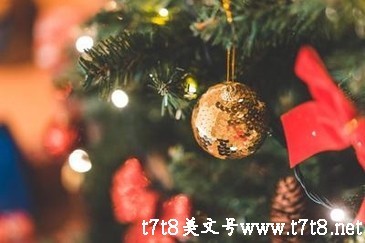一. 词汇
⑴ 单词
1. 介词:in, on, under, behind, near, at, of
1). in表示;中;在内。例如:
in our class 在我们班上
in my bag 在我的书包里
in the desk 在桌子里
in the classroom 在教室里
2). on 表示;在;;上;。例如:
on the wall 在墙上
on the desk 在桌子上
on the blackboard 在黑板上
3). under表示;在;;下;。例如:
under the tree 在树下
under the chair 在椅子下
under the bed 在床下
4). behind表示;在;;后面;。例如:
behind the door 在门后
behind the tree 在树后
5). near表示;在;;附近;。例如:
near the teachers desk 在讲桌附近
near the bed 在床附近
6). at表示;在;;处;。例如:
at school 在学校
at home 在家
at the door 在门口
7). of 表示的;。例如:
a picture of our classroom 我们教室的一幅画
a map of China 一张中国地图
nbsp;
2. 冠词 a / an / the:
冠词一般位于所限定的名词前,用来署名名词所指的人或事物。冠词有不定冠词和定冠词两种。不定冠词有两个形式,即a和an。a用在以辅音音素开头的词前,如a book; an用在以元音音素开头的字母前,如an apple.
a或an与可数名词单数连用,泛指某类人或某物中的一个。
This is a cat.
这是一只猫。
It#39;s an English book.
这是一本英语书。
His father is a worker.
他的爸爸是个工人。
the既可以用在可数名词前,也可以用在不可数名词前,表示某个或某些特定的人或事物,也可以指上文提到过的人或事物。
Who#39;s the boy in the hat?
戴帽子的男孩是谁呀?
------ What can you see in the classroom?
------ I can see a bag.
------ Where#39;s the bag?
------ It#39;s on the desk.
------- 你能在教室里看到什么呀?
------ 我能看见一个书包。
------ 书包在哪呀?
------ 在桌子上。
3.some和any
①在肯定句中用some.例如:
There are some books on the desk.桌子上有一些书。
Lucy has some good books露西有一些好书。
②在疑问句和否定句中用any。例如:
Is there any ink in your pen?你的钢笔里有墨水吗?
Do you have any brothers and sisters?你有兄弟姐妹吗?
There isn#39;t any water in the glass.杯子里没有水。
⑵记住它们的特殊用法。
①some亦可用于表示盼望得到对方肯定的答复或表示建议、委婉请求的疑问句中,这一点我们不久就会学到。例如:
Would you like to have some apples?你想吃苹果吗?
②any也可用于肯定句中,表示quot;任何的quot;。例如:
Any one of us can do this.我们当中任何一个都能做这个。
some 和any的用法是经常出现的考点,希望大家能准确地掌握它们的用法。
4.family
family看作为一个整体时,意思是quot;家庭quot;,后面的谓语动词be用单数形式 is ;如把family看作为家庭成员时,应理解为复数,后面的谓语动词be应用are。
My family is a big family. 我的家庭是个大家庭。
My family are all at home now. 我的家人现在都在家。
Family强调由家人组成的一个集体或强调这个集体中的成员。home指个人出生、被抚养长大的环境和居住地点。 house指quot;家quot;、quot;房屋quot;,侧重居住的建筑本身。
His family are all workers. 他的家人都是工人。
My home is in Beijing. 我的家在北京。
He isn;t at home now. 他现在不在家。
It;s a picture of my family. 这是一张我全家的照片。
5. little的用法
a little dog 一只小狗,a little boy 一个小男孩。little常用来修饰有生命的名词。
*但little还可表示否定意义,意为quot;少的quot;,加不可数名词。
There is little time. 几乎没时间了。
There is little water in the cup. 杯中水很少。
⑵ 词组on the desk 在桌子上
behind the chair 在椅子后
under the chair 在椅子下面
in her pencil-box 在她的铅笔盒中
near the door 在门附近
a picture of a classroom 一个教室的图片
look at the picture 看这张图片
the teacher#39;s desk 讲桌
a map of China 一张中国地图
family tree 家谱
have a seat 坐下,就坐
this way 这边走
二. 日常用语
1. Come and meet my family.
2. Go and see. I think Li Lei.
3. Glad to meet you.
4. What can you see in the picture?
I can see a clock / some books.
5. Can you see an orange?
Yes, I can. / No, I can#39;t.
6. Where#39;s Shenzhen?
It#39;s near Hong Kong.
7. Let me see.(口语)让我想想看。
see 在这是quot;明白、懂了,不可译作;看见。例如:
8. Please have a seat.
seat表示quot;座位quot;,是个名词。have a seat表示quot;就坐quot;,也可以说take a seat, 和sit down的意思相同。
nbsp;
三. 语法
1. 名词所有格
名词如要表示与后面名词的所有关系,通常用名词所有格的形式,意为quot;hellip;hellip;的quot;。一般有以下几种形式:
(1). 一般情况下在词尾加quot;#39;squot;。例如:
Kate#39;s father Kate的爸爸
my mother#39;s friend 我妈妈的朋友
(2). 如果复数名词以s结尾,只;。例如:
Teachers Day 教师节
The boysgame 男孩们的游戏
(3). 如果复数名词不以s结尾,仍加;。例如:
Children Day 儿童节
Women Day 妇女节
(4). 表示两个或几个共有时,所有格应加在后一个名词上。例如:
Lucy and Lils room Lucy 和Lily的房间
Kate and Jim father Kate 和Jim的爸爸
a map of China 一幅中国地图
the name of her cat 她的猫的名字
a picture of my family 我的家庭的一张照片
the door of the bedroom 卧室的门
2. 祈使句
祈使句主要用来表示说话人的请求、命令、建议、叮嘱等意图。祈使句一般不用主语,读时用降调。为使语气委婉、礼貌,常在句首或句尾加please 。在句尾时,please前多用逗号。
(1). 祈使句肯定形式的谓语动词一律用动词原形。
Go and see. 去看看。
Come in, please. 请进。
(2). 祈使句的否定形式常用don#39;t于句首。
Don#39;t look at your books. 不要看书。
Don#39;t play on the road. 不要在马路上玩。
nbsp;
3. There be 的句子结构
There be是一个;存在;句型,表示;有的意思,
肯定句的形式为:There be + 名词(单数或复数)+地点状语或时间状语。
be动词单复数的确定,看be后边第一个名词,当所接主语为单数或不可数名词时,be动词形式为is;当所接主语为复数名词时,be动词为are;当be动词后接两个以上主语时,be动词与最临近主语保持数上的一致。意思为quot;某地有某人或某物quot;。如:
There is an eraser and two pens on the desk. 桌子上有一块橡皮和两支钢笔。
There are two pens and an eraser on the desk. 桌上有两支钢笔和一块橡皮。
(1)there be的否定句,即在be的后面加上not。
否定形式为:There be + not + (any) + 名词+地点状语。
There is not any cat in the room. 房间里没猫。
There aren#39;t any books on the desk. 桌子上没书。
(2)there be句型的疑问句就是将be提到句首:Be there + (any) +名词+地点状语?肯定回答:Yes, there is / are. 否定回答:No, there isn#39;t / aren#39;t.
---Is there a dog in the picture? 画上有一只狗吗?
---Yes, there is. 有。
---Are there any boats in the river? 河里有船吗?
---No, there aren#39;t. 没有。
nbsp;
(3)特殊疑问句:How many . . . are there (+地点状语)?quot;某地有多少人或物?quot;回答用There be . . .
There#39;s one. / There are two / three / some . . .
有时直接就用数字来回答。One. / Two . . .
---How many students are there in the classroom? 教室里有多少学生?
---There#39;s only one. / There are nine. 只有一个。/有九个。
(4)如果名词是不可数名词,用:How much + 不可数名词 + is there + 地点状语?
How much water is there in the cup? 杯中有多少水?
How much food is there in the bowl? 碗里有多少食物?
